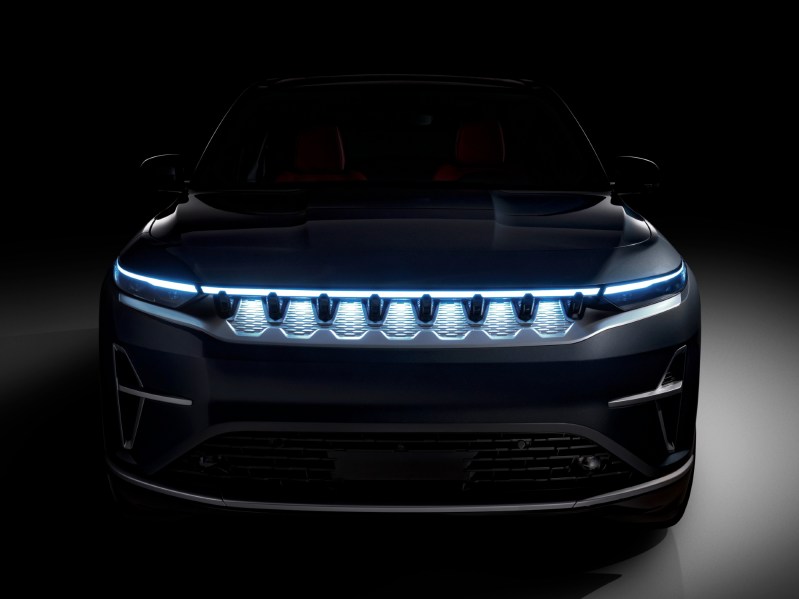
When the Jeep Wagoneer S appears in dealerships in the fall of 2024, it will be the first of eight battery-electric vehicle (BEV) launches on the STLA-Large platform planned by the Stellantis family of brands from 2024 to 2026. Stellantis will also use the Wagoneer S’s BEV-native platform with all-electric vehicles from Dodge, Chrysler, Alfa Romeo, and Maserati.
So far, Jeep has teased with photos and performance nuggets and claims that the Wagoneer S interior “features premium technology seamlessly integrated with meticulously crafted artisan details.” Jeep also hasn’t released starting prices for the Wagoneer S, but judging from the generous portion of superlatives in the Stellantis news release, we expect prices to reach or exceed the $80,000 threshold for SUV EV tax credits.

Why the Jeep Wagoneer S launch matters
Any new BEV model gets headlines. As the first all-electric Jeep, the Wagoneer S enjoys special status since it’s a halo model for the Jeep brand. The Wagoneer S is also the first large platform EV from Stellantis, the global automotive family of brands.
When the Jeep Wrangler Unlimited 4xe plug-in hybrid electric vehicle (PHEV) debuted, it soon became the most popular Wrangler variant and was the best-selling PHEV in the U.S. in 2023. Therefore, Jeep has evidence that brand loyalists are open to the new technology. If the Wagoneer S sells well in the highly competitive large SUV class, that will be a good sign for other Stellantis brands using the same platform. The high-end models can also help fund the expensive development of smaller and lower-cost mass-market BEVs.

The Stellantis STLA-Large platform has remarkable capabilities.
Stellantis set BEV goals of 100% passenger car sales in Europe and 50% passenger cars and light-duty trucks (including SUVs) in the U.S. by 2030. The company also aims to be carbon net zero by 2038. Stellantis is developing four global platforms for BEVs to support these aggressive goals. An international platform refers to a vehicle base or foundation for various vehicle types, styles, and relative sizes. BEV platforms also have battery capacity, performance, and range capabilities.
According to Stellantis, the STLA-Large BEV platform will support up to 118 kWh of energy in 400-volt and 800-volt architectures. The platform will charge up to 4.5 kWh per minute and will be suitable for vehicles that can accelerate from zero-to-62 mph in about 2 seconds.

Wagoneer S capabilities
Given the STLA-Large platform’s potential, Jeep’s claim that the Wagoneer S will go from zero to 60 mph in about 3.5 seconds doesn’t even begin to stress the capabilities. Jeep also stated that the Wagoneer S will have 600 horsepower and Jeep’s off-road capabilities.

The Wagoneer S look and feel
Jeep characterizes the Wagoneer S as a premium all-electric SUV. The vehicle exterior in the teaser photos is more aerodynamic than the blocky and square-shaped Jeep.
There are few specific details about the Wagoneer S’s interior features besides the statement that it will have a tailored driver control center with mindful materials and design-focused features. A Stellantis news release on the Wagoneer S design specifies that the new BEV will have a unique Jeep brand-exclusive Selec-Terrain toggle and dynamic, color-selectable ambient lighting. A dual-pane panoramic sunroof will be standard, and a 19-speaker McIntosh audio system will be available.
As the launch date approaches, we look forward to learning much more about the Wagoneer S.




